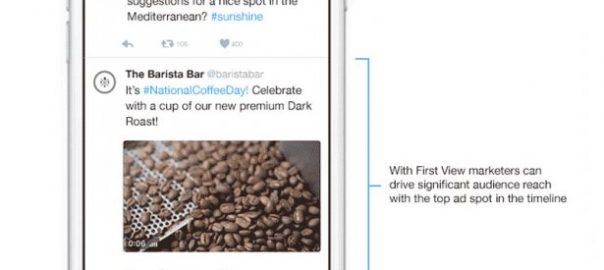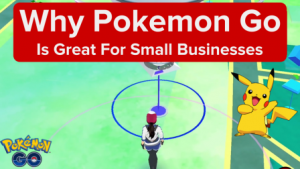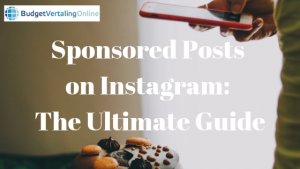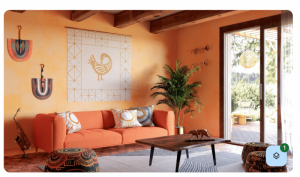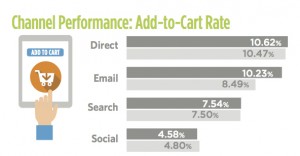
Video builds an emotional connection by bringing your brand to life. In fact, Axonn Research found 7 in 10 people view brands in a more positive light after watching interesting video content from them.
As advertisers are turning to social media to drive user engagement and increase brand awareness, they’re also turning their focus to video. Brands like Birchbox, Sprint, and Sephora know the value in sharing their video ads on social platforms like Facebook. After all, that’s where consumers are: on mobile and social.
It’s no surprise video ads on social media are on the rise. The future of video advertising is social. Advertisers would be remiss not to go where the dollars (and the views) are.
The Value of Video
According to Forrester, “If a picture paints a 1,000 words, then one minute of video is worth 1.8 million words.”
By 2019, Cisco predicts video will account for 80% of global traffic. That’s nearly 1 million minutes of video shared every second.
By sequencing your video ads on social media, you can slowly introduce your customers to your brand, gently walking them down the sales funnel. Here, retailer Kate Spade shares their #missadventure video ads on Twitter.

Source: @katespadeny
Each video ad builds off the other, taking the consumer on an adventure with familiar (and some new) characters. Each of the characters sports a Kate Spade product that the viewer can purchase upon completion of the video. Pretty savvy.
For advertisers, there are other benefits to video, too. Not only can video recycle existing content, it also:
- Captures Warm Leads. Viewers who watch the video to completion are interested in your product and are warm leads.
- Retargets Audience. Advertisers can retarget across multiple channels, especially mobile.
- Builds Brand Awareness. Visibility in social media channels will expose your brand to new audiences.
Video also isn’t just for big brands, small businesses can utilize it, too. Production costs have fallen and you no longer need to be a tech whiz with a generous budget thanks to apps like Vine.
Video Ad Format Options Are Increasing
Video is no longer just video. Video ad formats are expanding beyond traditional video and pre-roll to adapt to user viewing habits and preferences, a key strategy in combating ad blockers. Advertisers realize video that integrates and is relevant will always be viewed more favorably (no pun intended).
Currently, native video is video’s rising star. By allowing viewers to stay within a social media platform instead of linking video to other sites, the odds of watching increase.
Recently, YouTube beat Facebook to the punch, delivering 360-degree live-streaming video. And they plan to allow content creators to stream virtual reality-style videos in real-time (e.g. think Coachella concerts).

Source: The Country Caller
At this time, they’re not sure how commercials will fit into the format, but it’s only a matter of time. Especially when Google is claiming YouTube adverts are more effective than TV ads. Stay tuned as this video format evolves.
Instagram Ups Video Ads to 60-Seconds
By 2017, it’s anticipated 51.8% of social network users will use Instagram. As Instagram’s double-digit growth continues, they’re taking advantage of more eyes by upping their 30-second ad format to 60-seconds. The longer format gives marketers the chance to be more creative, which works well for product launches and movie premieres.

Source: The Digiterati
By making brands speak the language of the channel, and keeping the video ads relevant and entertaining, Instagram expects their users will have no problem with the longer format. And to help marketers see if the longer format is paying off, Instagram has started counting views on videos (e.g. three seconds equals a view).
Twitter Is Offering “First View”
Taking a cue from Facebook, Twitter is looking to help marketers place brand stories in front of audiences, too. The social media juggernaut launched “First View,” a video content only format.
First View allows advertisers to utilize Twitter’s most valuable advertising real estate — the top of the feed — for a 24-hour period.

Source: Social Media Week
Every time a user opens their app or logs onto Twitter’s website, your video ad will be the first thing they see.
Facebook Continues to Dominate Video Ads
The king of social — Facebook — is holding steady as the number one platform for brands to post video ads. And Facebook isn’t just popular with Millennials, a coveted audience. In a recent survey conducted by eZanga, ages 45 and older reported Facebook as their main platform for video consumption, with 27% stating they view most of their mobile video content on Facebook.
It’s expected that video ads will occupy 15% of the digital marketing space by 2017, earning Facebook $ 3.8 billion from their video ad initiatives by that time. So how is Facebook appealing to all generations and crushing the competition?
Runs Shorter Video Ads. When the average human attention span online is approximately 60 seconds, Facebook’s autoplay ensures viewers will have a longer attention span for your ad. The average length of a FB video ad is only 44 seconds.
Pauses Ads. To ensure viewers are actually watching the video, some ads will actually pause when you leave the screen, giving you the option to resume the video.

Offers Way to Check Out Competition. For advertisers keeping tabs on the competition, Facebook’s Video Ad Creative Spotlight also shows how other brands across various industries (financial, consumer, restaurant) are using Facebook.

Source: Facebook IQ
Allows Publishers Access to Instant Articles. Recently, Facebook announced they’ll allow publishers to place video ads at bottom of Instant Articles, with the goal of raising ad impressions. How it will work: one ad for every 350 words of content.
Advertisers get that today’s consumers are highly visual and influenced by social media. Different social platforms attract different audiences, so it’s imperative that brands pick the right one for their target audience.
By choosing the right social media platform, having and maintaining a video strategy that provides consistent video ads, brands will have the tools to keep audiences engaged.
Digital & Social Articles on Business 2 Community(20)
Report Post